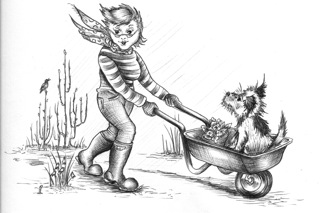I now have a small garden but I am very much involved with the garden I owned and loved 18 years ago now we live very close by. The garden was nearly 11 acres, but the summer and winter gardens now belong to somebody else, so it is several acres smaller. I am supervising the restoration of the woodland garden which is glorious in spring. Many years ago, this garden belonged to a well-known nurseryman. I believe he planted it nearly 80 years ago so the camellias and magnolias are enormous. It has been neglected since I left, but now we are trying to rejuvenate the trees and shrubs. The great thing about huge, ungainly trees is the fun you can have making them into interesting shapes and creating glimpses through the woodland that weren’t there before.
While the camellias and magnolias are looking their best I want to show you some of them. So let’s stroll through the woodland. The carpets of snowdrops are mainly over now, but there are plenty of hellebores. Honesty and brunnera are coming out and soon there will be bluebells and dicentras.,

In my day there were 23 magnolias, some of them are no longer there and some are not yet in bloom. I wish I had names for them but I am afraid I don’t. But they are very venerable and make a fabulous show. Some of the camellias are as big as haystacks too.
























In late winter and spring, fragrance fills the air from sarcococcas, Mahonia japonica and masses of Skimmia ‘Kew Green’.

Huge shrubs of Viburnum burkwoodii are intensely fragrant too. The scent reminds me of furniture polish.

Pieris japonica has a light, sweet fragrance.

And Osmanthus x burkwoodii is strongly fragrant too.

I planted pink and white flowering currants years ago and now there are masses of them in all shades of pink and white.

If we leave the woodland we can walk round the lake. The banks are full of wild flowers later, including wild orchids. Sometimes kingfishers visit and of course there are always plenty of ducks and Canada and Grey-lag geese.



The row of Prunus shirotae is a delight at this time of the year and delicately fragrant.

Other visitors to the garden are hares and badgers and the dreaded Muntjac deer, They even breed in the garden. They are incredibly destructive. Here is a new born one.

I would like to show you the birch circle I made years ago. This part of the garden was sold along with the barn which is now a house. So let’s have a cheeky peep into the neighbour’s garden. A quick look as we haven’t asked permission, so don’t tell anyone. So many people have asked me what the birch circle with the stone in the middle was for. So let me say right now, it’s not for anything. I just love birches. Rumours of me being a Druid are quite unfounded, but they have caused me and my family much amusement. This is a village, so what people don’t know they make up. The new owner said she had a priest bless it, so goodness knows what she thought I had been doing there. I’m just a down to earth gardener who’s getting on a bit, not some New Age nut in robes sacrificing goats.

There is a little wild woodland where I planted 100 wild daffodils, Narcissus pseudonarcissus years ago. They have multiplied into a huge carpet over much of the copse.

At the heart of the woodland garden is a giant redwood. William Lobb brought back seeds from these trees from America in 1852. They became a status symbol for wealthy Victorian estate owners. Choosing a name for this tree was controversial. Dr. Kellogg, the founder of the California Academy of Science, thought such an iconic tree should be called Washingtonia after George Washington. Here in England, John Linley of the Horticultural Society thought it should be named Wellingtonia after the Duke of Wellington. This seems a colossal cheek wanting to name an American tree after our own bellicose Duke. In fact, even now some people refer to it incorrectly as Wellingtonia. To be honest I am not sure whether the tree here is Sequoiadendron giganteum or a coastal redwood, Sequoia sempervirens, they are both enormous and look the same to me.
The garden here was built round a thatched cottage, not some stately pile. But after the war the local ‘big house’ set in glorious parkland was demolished. The owner of the nursery here grew a seed from the enormous tree which is still there 170 years after it was planted. It is now quite an impressive sight. The park was painted by Gainsborough and was obviously much loved by its owner who asked to be buried in his garden, standing up for some reason. Giant redwoods live to be 3000 years old so growing one from seed and planting it must give you a little taste, if not of immortality, but at least of reaching down to future generations. This tree was obviously special to the nurseryman who created this garden, for when he became very ill with cancer he took his own life underneath it and his ashes were scattered here. This seems like a fitting memorial to a very talented horticulturalist.







































































































